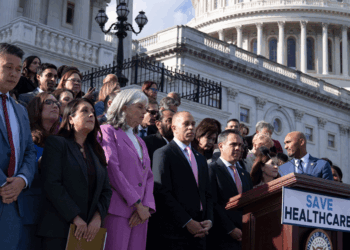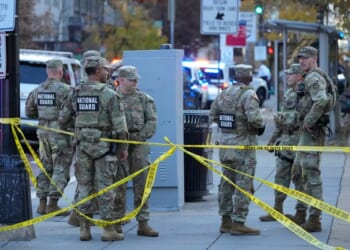Unreasonably strict radiation exposure limits are holding back nuclear power development, according to a July report from Idaho National Laboratory (INL) researchers. The report challenges the current model for radiation exposure, arguing that recent evidence shows it is biologically unwarranted.
The current linear no-threshold approach assumes any amount of radiation—even minuscule—increases cancer risk in direct proportion to the dose, with no safe threshold. This model underpins the Nuclear Regulatory Commission rules requiring exposures to be kept “as low as reasonably achievable,” which has effectively shifted to “as low as possible.”
Americans, on average, are exposed to about 620 millirems of radiation annually—roughly half from natural sources such as soil, rocks, radon gas, and cosmic rays, and half from medical imaging. The Commission acknowledges that this amount “has not been shown to cause humans any harm.”
The Nuclear Regulatory Commission sets the current exposure limit to members of the general public from licensed operations at 100 millirems per year. For comparison, living within a few miles of a nuclear power plant exposes someone to a radiation dose of 0.1 millirem per year, a chest X-ray is about 2 millirems, and an abdomen and pelvis C.T. scan is about 770 millirems.
The Idaho researchers’ review of the epidemiological literature found many contradictory results marred by significant methodological flaws. Overall, they conclude that “studies have generally not demonstrated statistically significant adverse health effects at doses below 10,000 millirems delivered at low dose rates, despite decades of research.”
Biological studies also show robust cellular repair mechanisms that counteract damage from low doses of radiation. That means harmful effects typically appear only above certain dose thresholds. The Health Physics Society similarly concludes that “below levels of about 100 mSv [10,000 millirems] above background from all sources combined, the observed radiation effects in people are not statistically different from zero.”
The Idaho researchers recommend scrapping the current approach in favor of annual exposure limits of 5,000 millirems for occupational workers and 500 for the public. Easing overly strict limits, they argue, “could dramatically improve the cost-competitiveness of nuclear energy, expand access to nuclear-medicine procedures, enhance industrial applications of nuclear technologies, benefit environmental remediation of former nuclear sites, and improve management and disposal of commercial nuclear wastes.”
This article originally appeared in print under the headline “Radiation Rules Are Stalling Nuclear Power.”

















